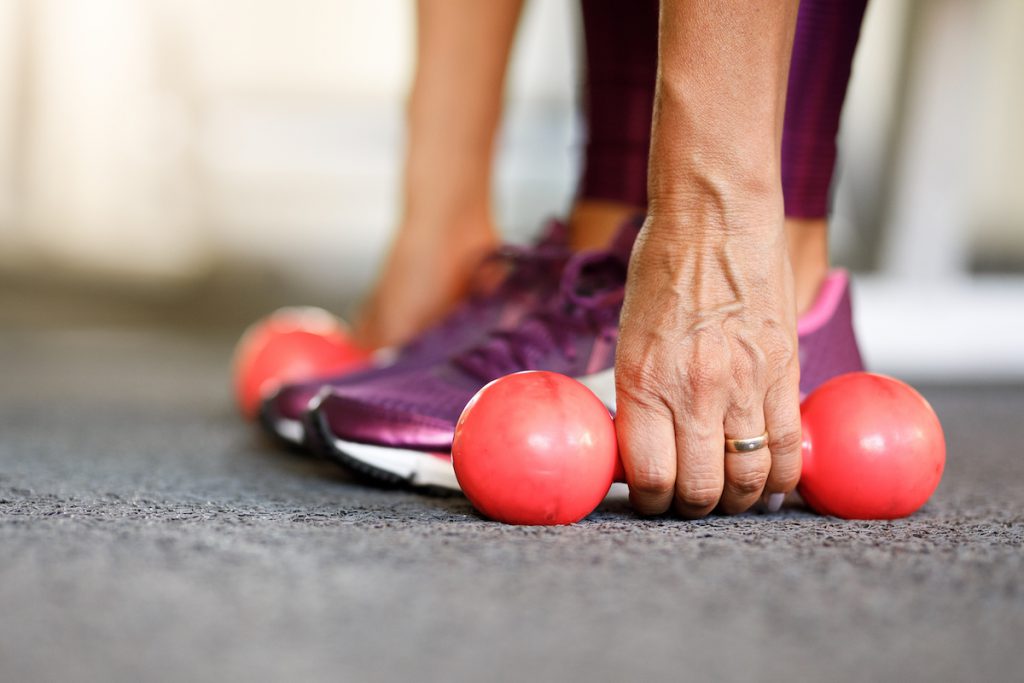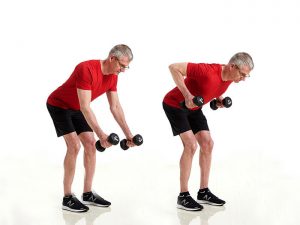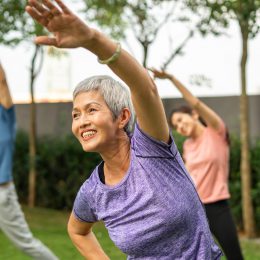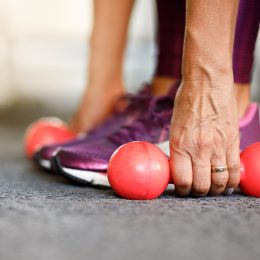How to Add More “Weight” to Your Favorite Exercises (Without Ever Buying New Equipment)
Try these five simple strategies to keep your workouts — and results — progressing.

We get it — buying a new set of weights probably isn’t at the top of your “needs” list. But that doesn’t mean you shouldn’t challenge yourself.
“The body will adapt to the demands you place on it,” says personal trainer Erin Mahoney, CPT. “So if you’re using the same 1-, 3-, and 5-pound weights for all of your workouts, you’ll get great at lifting that. But day-to-day activities require different movements at different speeds and with different weights. And if you don’t keep adding intensity or put new demands on your body, it stops adapting.”
Fortunately, picking up heavier and heavier weights isn’t the only way to get stronger, fitter, or more functional in both your workouts and everyday life. Case in point: these five strategies to add more “weight” to your favorite exercises.
Note: When trying these out, introduce one at a time, says Joseph Lipsky, DPT, CSCS, a doctor of physical therapy and certified strength and conditioning specialist. Packing several of them into a single exercise at once may add more “weight” than you intended. Pick one of the below progressions to use. Then, once it starts to feel easy (give it at least 4 to 6 weeks), you can add in another.
1. Add a Pause
One of the simplest — and most effective — ways to make any given exercise harder is with what’s called an isometric hold, Lipsky says.
Here’s how it works: During any exercise, you simply pause and hold that position for 1, 5, 10, even 30 extra seconds. For example, during a lunge, you might pause at the bottom of the move for a few seconds before standing back up.
You can also add multiple pauses to any given exercise. With those same lunges, for instance, you can briefly pause once you’ve lowered halfway down, at the bottom, and again when you’re halfway up.
Play with these pauses and see what feels fun and challenging to you. However you decide to add isometric holds, they will increase how long and hard your muscles have to work. Bonus: They’ll also improve the health of your connective tissues to help safeguard against injury, according to a 2020 Sports Health study.
2. Slow Down
When it comes to strength exercises, moving slowly is so much harder than rushing through your reps, Mahoney says. That’s because doing so keeps you from using momentum or “cheating” the movement. And, like isometric holds, slow (aka tempo) exercises force your muscles to work for more time.
The most important part of the exercise to slow down is the lowering, or eccentric, phase. For example, the next time you do glute bridges, raise your hips up, pause, then slowly lower your hips back to the floor over the count of three.
“Slowing the eccentric phase actually builds greater strength than the upward phase and helps to prevent injury,” Mahoney says.
Feeling inspired to build more functional strength? Try a SilverSneakers Total Body Strength class! See the latest SilverSneakers LIVE schedule and RSVP for classes here.
3. Combine Two Moves into One
“Daily activities require not just forward and backward or up and down movement, as we see with most exercises,” Mahoney says. “You’re turning, moving to the side, and doing more than one thing at a time.”
Mahoney’s solution is to blend two exercises together. This strategy works with virtually any two exercises. Maybe you combine a reverse lunge with a biceps curl. Or a side squat with a scaption shoulder raise. Prioritize your form during both exercises and you’re good to go.
One example to try is a Dumbbell Hip Hinge to Dumbbell Row. Put them together and you’ll do more in less time while getting in cardio, coordination, and balance training.

How to Do It: Stand tall with a dumbbell in each hand next to your thighs with your palms facing in. Keeping your back flat, push your hips back behind you and allow a slight bend in your knees. Pause, then squeeze your shoulder blades together and pull through your arms to row the dumbbells to the bottom of your ribs. Lower the dumbbells back to the sides of your legs, then push through your legs and squeeze your glutes to stand back up. That’s one rep. Repeat 8 to 12 times.
Subscribe to our newsletter
It's quick and easy. You could be one of the 13 million people who are eligible.
Already a member? Click to discover our 15,000+ participating locations.
Follow Us
You can find a seated variation of this exercise here.
4. Work One Side at a Time
You might be surprised to learn that working one side at a time — doing all your reps on one side and then switching — is actually a great way to increase the exercise’s challenge.
“You’ll be working stabilizer muscles that are involved in balance, making the exercise harder,” Mahoney says. Those stabilizer muscles include not just the ones supporting your working joint, but also all 360 degrees of your core. After all, when doing single-sided exercises like one-arm rows, presses, or single-leg hip hinges, it’s your core that keeps you from falling to one side.
“Working one side at a time improves your ability to function and avoid falls,” she says. For the greatest benefits during single-sided exercises, keep your core squeezed at all times and focus on moving slowly and with control.
5. Pick Up Some Household Items
If your mind is set on picking up something heavier, know that you don’t have to limit yourself to dumbbells or strength-training equipment. Your home is full of items just waiting to be picked up, curled, pressed, and squatted.
Loaded purses and backpacks, water jugs, even bags of rice or cat litter, work as DIY weights. And apart from potentially weighing more than your dumbbells, they force you to grip, hold, and move the weights in different ways, helping you build grip strength, dexterity, and functional coordination.
Check Your SilverSneakers Eligibility Instantly
SilverSneakers members can go to thousands of gyms and fitness locations across the nation, plus take SilverSneakers LIVE online classes that are designed for seniors of all levels. If you have a Medicare plan, it may include SilverSneakers—at no additional cost. Check your eligibility instantly here.
Not eligible for SilverSneakers? You can still get 200+ free SilverSneakers On-Demand videos and stay in touch with us by creating your online account.





